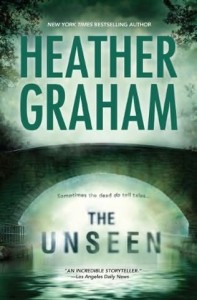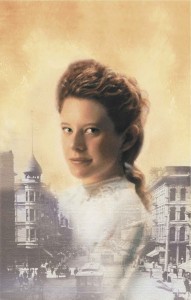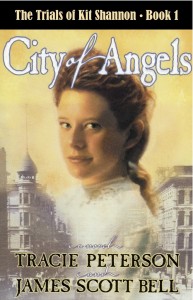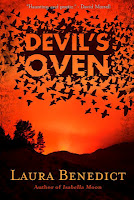Monthly Archives: March 2012
Title Trauma
By John Gilstrap
I have a hard time with titles. To date, of the nine books I’ve published, only three bear the titles I proposed. Here’s the history:
Mine: Nathan!
Title: Nathan’s Run
Mine: Most Wanted
Title: At All Costs
Mine: Even Steven
Title: Even Steven
Mine: Scott Free
Title: Scott Free
Mine: Six Minutes to Freedom
Title: Six Minutes to Freedom
Mine: Grave Danger
Title: No Mercy
I confess that after No Mercy, I stopped trying. My working titles became Grave 2, Grave 3 and Grave 4. My editor came up with Hostage Zero, Threat Warning and Damage Control. I love them all, but I’ve come to embrace my limitations. And typically, the title is just about the last element of the book to be written.
When Damage Control hits the shelves in June, though, it will contain the first chapter of the book that will come out in 2013–the one I have been writing under the title, Grave 5. That’s a little under-inspiring, so we had to scramble to come up with a title earlier than we usually do. Since the book deals with some issues regarding the first lady, I thought I had a winner: First Traitor.
Everyone was excited until we said it out loud, and we realized that the title would be heard as First Rater. That’s bad for radio interviews.
In the end, we decided on High Treason. I love the title and I am utterly shocked that it hasn’t already been used for a big thriller.
Here’s what I’ve come to understand about titles: It’s more important for them to be compelling and cool that it is for them to apply directly to the story. The clearest example of this in my writing is Hostage Zero, which actually means nothing, but sounds very cool. The title has done its job when a reader picks up the book and reads the back cover and thumbs through the first chapter. That’s where the buying decision is made.
What do y’all think? I know writers who can’t write unless they’ve got the title nailed down. I also know writers to fight for the title of their choice, even though their choices are often not very commercial.
How do you deal with titles?
The Unseen
by Jordan Dane
I am writing the final chapter of my latest project. INDIGO AWAKENING is Book #1 in THE HUNTED series for Harlequin Teen (Fall 2012). I love and hate finishing a book. There is such joy in making the final revision. It’s a real sense of accomplishment that launches me into a euphoric state that lingers. I also tend to procrastinate finishing because I never want to let the world and the characters go. The beauty of this project is that I get to keep the fires burning with a series.
To celebrate, I like to do something special to mark the occasion. As luck would have it, I’ve found the perfect thing. New York Times Bestselling author, Heather Graham, will be in San Antonio on Monday, April 2, at 7PM at the B&N LaCantera to sign her book THE UNSEEN. I made a date with my husband to have a nice dinner too. (Writing a book is taxing for a spouse too.)
THE UNSEEN is set in San Antonio. That alone is enough to give me goose bumps. Heather graciously blurbed my debut book – NO ONE HEARD HER SCREAM – before I had my first book on the shelf. I will never forget her kindness. An author of her caliber, I didn’t know what to expect. As an author, I’m always prepared for rejection, but her generosity blew me away.
Here is a summary of the plot for THE UNSEEN (Mira, Mar 27, 2012)
 1800s. San Antonio, Texas: In room 207 at the Longhorn Saloon, in the long shadow of the Alamo itself, a woman renowned for her beauty was brutally murdered. Her killer was never found.
1800s. San Antonio, Texas: In room 207 at the Longhorn Saloon, in the long shadow of the Alamo itself, a woman renowned for her beauty was brutally murdered. Her killer was never found. One year ago: In that same historic room, another woman vanished without a trace. Her blood was everywhere…but her body was never recovered.
Now: In the last month, San Antonio has become a dumping ground for battered bodies.
All young women, many of them long missing, almost all forgotten. Until now.
Texas Ranger Logan Raintree cannot sit by and let his city’s most vulnerable citizens be slain. So when he is approached to lead a brand-new group of elite paranormal investigators working the case, he has no choice but to accept the challenge. And with it, his powerful ability to commune with the dead.
Among Logan’s new team is Kelsey O’Brien, a U.S. marshal known for her razor-sharp intuition and a toughness that belies her delicate exterior. Kelsey has been waiting all her life to work with someone who can understand her ability to “see” the past unfolding in the present. Now she has her chance.
Together, Kelsey and Logan follow their instincts to the Alamo and to the newly reopened Longhorn, which once tempted heroes with drink, cards and women. If the spirits of those long-dead Texans are really appearing to the victims before their deaths, only Kelsey and Logan have the skills to find out why.
And if something more earthly is menacing the city’s oldest, darkest corners, only they can stop it—before more innocent women join the company of San Antonio’s restless ghosts….
“Graham deftly weaves elements of mystery, the paranormal, and romance into a tight plot that will keep the reader guessing at the true nature of the killer’s evil.”
—Publishers Weekly review on THE UNSEEN
I love stories set in San Antonio, my hometown. My debut book was set in SA and I saw the city with fresh eyes to tell that story. The creepy underpinnings of the paranormal is an added bonus, especially when written by such a gifted author. So my treat to finishing my book is Heather Graham and THE UNSEEN.
What about you, my TKZ family? Do you do anything special to celebrate the accomplishment of finishing a book? What is the wildest thing you ever did or would like to do for your next one?
Blog Touring
What are the results of my recent frenzied rush around the blogosphere? For Shear Murder, I have done 16 guest blogs since January 1st. This doesn’t count my own blogs. On my at-home printout, I’ve listed the numbers of comments on each site, so I would know for future reference which posts attracted viewers and how many. When I release a new mystery again, I’ll solicit the sites where I got a good response for another guest appearance.
Some topics didn’t do well, like interviews and my “pet peeve”, or cutsy talks with my sleuth. Other topics stimulated good discussions. These were more instructional pieces. I wrote a new article for each site so they were all different and related to my new release in some way. I’ve had people say that my humorous mystery sounds like fun and they’ll look it up, so I really believe this tour got me exposure and introduced my work to new readers.
I feel my own blog connects me to readers and aspiring writers who like my posts on writing craft and business of writing. Those articles attract the most viewers. It’s brought me a “Klout” score of 50 especially in Writing. I mix these discussion topics with places I visit in Florida. The downside is that I spend time writing blogs instead of writing my next book. And people are probably sick of “take a look at my blog” posts by now. Do I feel it helped sales? Maybe. Certainly, I gained exposure and the tour contributed toward name recognition. Will I do it for my next book?
Ah, there’s the question. My next release will be a paranormal romance. I do need to gain exposure among those readers. I already have a list of potential topics (which I advise you to jot down as you’re writing your next book). I can look at my previous blog tour in that genre and see who to approach. However, right now, it’s enough to do my personal blog and this one. Writing blogs instead of the next story sucks away creative energy. To launch a virtual tour, you have to solicit hosts, write the pieces, publicize the tour, and then show up each day to answer comments. That level of time commitment may not be suitable for everyone.
But for those of us who jump on the blog tour bandwagon, it’s great to support each other. If you want to get more involved, check out the Book Blogs site. And please offer any tips or insights here that you’d like to share on blog touring.
Listen: Let Your Ears Do The Writing In Ten Easy Steps
By: Kathleen Pickering www.kathleenpickering.com
 Do you want to know a secret? I visualize a collective leaning forward with a hand to ear, to which I’ll whisper: “If you want to find a good story, listen!”
Do you want to know a secret? I visualize a collective leaning forward with a hand to ear, to which I’ll whisper: “If you want to find a good story, listen!”
Where co-blogger, James Scott-Bell, spoke in his last blog about listening to your characters as they unfold to bring their story to life, I’ll discuss how listening to the world around you can uncover a story.
I can guarantee you that every published author you meet will tell you how something they heard triggered a novel. If folks wonder how an author can accept a multi-book contract without even knowing what they’ll produce, it’s because authors listen as intently as they write. Stories are floating all around you: in the news, eavesdropping on a conversation in a restaurant, elevator or train, chatting with colleagues at work, conferences, with strangers, or for me the best source—family drama.
Sometimes I’ve spoken with people who tell me something they’ve never told others before, and they’re suddenly shocked that they’ve revealed their story. That’s because I have honed listening skills that make others comfortable in talking with me. Please understand, I don’t listen to folks to elicit deep dark secrets (though that would be nice!) but, because long ago, I discovered that I find people fascinating. No joke. I love to listen to what others have to say. If I’m talking with you it’s because I am genuinely interested in you.
A few years back, we were on vacation in Montana. From a single question I asked the cook at the dude ranch I learned that she was hiding from her drug dealer husband way down in New Mexico. This woman’s story spawned one of the proposals that Harlequin bought in my three book contract. Added bonus? A family member is an undercover narcotics detective who is telling me specific details to give the story life. Am I listening? You bet!
The next listening coupe was from my niece. She is an emergency room nurse who had a bout with cancer and survived. (YAY!) Listening to her recount her determination to outwit her fears and stay courageous during her treatment became book two of my Harlequin proposal. And, the love story that grew from her ordeal is so romantic it gives me goose bumps. I can’t wait to write the book based on her story!
The third plot hit me unexpectedly. I was discussing with friends the plight of rape victims who become pregnant and learned that several US states have no laws protecting women from rapists seeking custody of children born from their attack. Not only did this make me want to use some of Steven King’s horror tactics to stop such an atrocity, but hearing this information ignited the first of the three proposed novels I’ll be writing for Harlequin.
So, if you want to tap into a world of stories waiting to be written, then listen. And listen well. There are two approaches to good listening. One for business, one for empathy. I use both. Here are the first five steps offered by business consultant, Bernard Ferrari, to hone listening skills. These work exceptionally well when interviewing someone:
1. Show Respect. If you’re seeking information, let the person to whom you are speaking know that you value their knowledge and/or opinion, so are asking for their response. That way, they understand your agenda.
2. Listen to Everyone. Developing a good rapport not only with folks in the industry, but anyone in your sphere of existence lays the groundwork for “nuggets of gold” to surface in conversations.
3. Be Quiet! Even though as an excellent story teller, you can “top this” in sharing stories when someone is speaking, refrain! Let your conversation partner speak for 80% of the time. Use your 20% for thoughtful interaction. Remember, you are the one listening here.
4. Understand Emotions. Avoid having important discussions when you are tense, angry, upset or frightened. These emotions will distract you from listening. Sometimes it’s better to know when you should postpone and reschedule an interview (or listening) opportunity.
5. Ask Questions. When you are listening well, asking questions helps bring forward new facts. Even if you disagree with the speaker, phrasing your response with a question shows you are open, flexible and interested in their point of view. A well phrased question can also help the speaker think in a new way or reach different conclusions.
Now, for the second approach to listening, I have learned that in making an emotional connection, the most important fact to remember is to listen to others how you would want them to listen to you. Here are five additional steps to creating an emotional connection with your conversation partner:
6. Body Language. Face the speaker, sit straight or lean forward to show your attentiveness. (Actually, as a good listener, this happens automatically because you ARE interested!)
7. Maintain eye contact. You don’t have to drown in those limpid pools, but while someone is speaking stay glued to the discussion. Don’t let your eyes wonder over their shoulder, or stare at the floor or passersby as they talk. We all know what that feels like. It’s an instant turn off to the person speaking.
8. Create an empty space. This is my most favorite tool for listening. I start a conversation with absolutely no expectations of what my partner will say. It’s what I’ve learned to call an empty space between speakers. The response I get from my question can host a tapestry of answers; all from which new threads of conversation can be lifted. If you have expectations of what your partner will say, it clouds the clarity of information opportunities. You end up unconsciously steering the conversation, or worse, not fully hearing what was said.
9. Minimize external distractions. If your conversation is over a meal, or while giving a workshop, put down your fork for a minute to listen, or stop flipping through your notes while a question is being asked. Again, it’s the one-on-one message you give while listening that keeps the comfort level engaged.
10. Mirror the response. To ensure the speaker that you understood his statement or question, it helps to say, “So, what you’re saying/asking is . . .” and repeat their statement in your own words. This gives the speaker an opportunity to clarify a misunderstanding, or better yet, confirm that you understood. Again, mirroring shows your conversation partner that you are interested in what he/she is saying. It not only connects them with you, but enriches your understanding of the person about whom you’ve taken time to learn more.
Every listening encounter is a learning experience. Every listening encounter is a chance to connect with your world. Can you tell us here on The Kill Zone when a listening encounter spawned a story for you?
I am listening.
Write on, my friends!
xox, Piks
Agent Timelines
Recently a friend sent off a manuscript to an agent and asked me how long she should wait before sending it out to other agents. Under normal circumstances, I would have said she could send out simultaneous queries, but this agent was a referral who had requested the entire manuscript so I counselled her to wait to give this agent a decent chance to respond. But, she asked, how long should I wait?
Good question. How long should you wait to hear back from an agent before you start following up/move on/feel resigned to your fate?
I’m not sure I have the answer – all I can say is that, in my experience, authors are (by and large ) an impatient lot and agents are (by and large ) an extremely busy lot who can take their sweet time in getting back to you. So today’s blog is about expectations as to agent responses (and I’d love to get some feedback from my fellow TKZers on what is a ‘reasonable’ response time). I think (as a pretty impatient author myself) it can be tricky knowing when to expect a response from agents, particularly when you are a debut author.
When I first sought out an agent I had no idea what to expect but, after I had some requests for partials following on from the SF Writer’s conference, I sent out my material and waited. I had some responses within couple of weeks but the agent I eventually signed with took close to 6 weeks to respond. I even had one agent (the outlier!) who contacted me months later to ask if I had representation yet! (Then again, an editor did contact my agent a few weeks before my first novel was due to be released expressing interest in the manuscript so I wonder if their isn’t an alternate form of time known as “publisher and agent time” out there in the ether!)
Obviously, if you haven’t heard from an agent within what you think is an acceptable time period you should follow up with a professional email (no – “why have you not bothered to contact me, can’t you tell my work is genius?!” emails please!). I think it’s also perfectly fine to ask them for an estimated date that you could expect to hear back from them – though be aware, you may not still not receive any response.
So what do you think are reasonable time frames for an agent to respond to:
- An initial query letter; or
- A partial manuscript; or
- A full manuscript and (hopefully later on…any subsequent manuscripts you send!)
How long have you waited for an agent to respond?
How to Develop an Enduring Series Character
James Scott Bell
Twitter.com/jamesscottbell
Today, through the wonder of digital publishing, I am announcing the re-birth of my first series character. City of Angels, Book 1 in the Trials of Kit Shannon series, is now available for an introductory price of $2.99 on both Kindle and Nook.
Let me give you the background.
Those are two key components for an enduring series character: setting and vocation. You need to know the nooks and crannies of your setting so it can take on the feeling of being another character in the story. And readers love to see authentic details about a character’s work life.
Research, friends.

STEAL THIS BOOK. Oh, you did? My Stepmom Died on Facebook. I’m about to co-write a supernatural thriller.
John Ramsey Miller
Here’s one for ya. My stepmother, JoAnn, died a week last Monday. I dearly loved my stepmother. She was an intelligent, humorous, loving, and wonderful woman. She was as responsible for my writing career as anyone because she loved my writing and said so. She pulled stacks of my work out of the burnpile and gave them to me years later. (I later burned them). We shared a love of literature. She was a yellow-dog Democrat and I a Republican scally-wag, but she never held it against me, and we got along just fine. My father died several years ago and she moved out to Texas to be near her Texas-living daughter. I found out that she was sick and I asked my stepbrother to keep me posted and to give her my love. I found out on Friday when someone my sister knows saw my stepmother’s obit in the Jackson Clarion ledger. When I blasted my step-brother for not bothering to tell me she passed away he said, and I quote: “I posted it on my Facebook page on Monday.” The funeral was a private affair, and I was not invited. Holy Shit Bat-woman. Needless to say my step-siblings don’t care much for me. But I love them anyway. Well, at least I can write that book I always wanted to write but wanted to wait until all of the people who would be less than favorably portrayed were dead.
By the way, I am joining forces with Mark Tufo (one of my favorite supernaturalists) to pen a series of novels. Since I’m a long-standing fan of this guy’s work, I didn’t hesitate to agree to play in the sandbox with him. His genre and mine are in different locales on the literary map, so we are thinking we will be meet at the fence. He’ll be putting his best characters into the pasture, and I’ll be sending my gang into the same place. It should be quite a shot of ice water to the face for our fans on both sides. We’re presently working on how this is going to work on a practical level, but I’m thrilled to be doing something challenging with someone I admire.
I am using my best character or two, and taking them into a world they would have never believed existed. Can I take established straight thriller characters and put them into a bump-in-the -night world. We shall see and I intend to. The great thing about not being under contract is that one can experiment and do that which one would never ordinarily be allowed to do.
By the way, if any of my author buddies want T-shirts for promotion, my son has a new company and lots of tasty equipment. Use my name and get deals.
On Monday evening I received this from a tech-savy author friend’s wife email via my web site contact form. She runs his e-enterprises, and she is upset about how many of her husband’s novels are not being paid for.
Comments: FYI stolen books:
The Last Day, Too Far Gone, Inside Out,Upside Down, Side by Side, Smoke & Mirrors.
Downloaded average of 723 times each, last time 2 hours ago. Maybe your publisher can do something?
She went on to say: Most of the authors that you blog with on Kill Zone are on there. I wrote one of them as she had an easy contact to find. I can get you a list and you can pass it around if you so desire.
I forwarded the email to my editor and agent, but I expect if Bantam could stop it, they would have. There are more sites like this. That one site is responsible for a minimum of four thousand copies of my books being downloaded for free. I appreciate that so many people downloaded my books, and most downloaded all of them. That means dedicated fans. I have mixed feelings about this loss of revenue, which I, like most authors need in order to pay bills, which enables us to write more books for our fans–a % of which will download others of them. If we have the cow in the pasture, why buy milk. Cheese, which is hard to make, maybe, but not milk free for the tugging.
One way to look at this is that this is really no different than having a book someone buys, sharing it… often until it falls apart. If it is outside our control, should we worry about it?
Gosh, I’ve had a busy week on the farm.
Can You Feel the Love?
Over the Top, and Right Over the Edge
Today TKZ welcomes author Laura Benedict, whose novels ISABELLA MOON and MR. LONELYHEARTS are both favorites of mine. Her latest, DEVIL’S OVEN, was just released.
When I was deep into the editing process with my first-to-be-published novel, I had a conversation with my editor that went something like this (And I definitely mean “something like.” I have a terrible memory, but I suspect he wouldn’t mind the paraphrasing.):
Editor: “We need to talk about Character X’s murder.”
Me: “Really? What do you mean?”
Editor: “You have the murderer roll Character X’s head across the kitchen floor so it stops at the heroine’s feet.”
Me: (Cackling nervously–something I would NEVER have a character do, but I definitely cackled. Nervously.) “I know! Isn’t it awesome?”
Editor: “Well, it’s certainly dramatic.”
Me: “It’s deliciously evil, don’t you think? It just came to me. Wild, huh?”
Editor: “You might want to think about writing the scene another way.”
Me: “Really? Why?” (My heart was sinking. I knew this wasn’t going well.)
Editor: “You already have one character being stabbed to death with a pitchfork. I think the detached, rolling head is, I don’t know, over-the-top?”
Me: “But it’s what the murderer does. He’s a murderous psychopath!”
Editor: “It’s not the kind of thing people expect in a book like yours. You would find something like that in a horror novel, not an upmarket thriller. I think you could pull it back a little and still have it be effective.”
Me: (Pouting in a most unprofessional way, yet knowing in my heart that he was right, dammit.) “I’ll give it a shot.”
In the end I listened to him because I really did know he was right. I had known the battle was lost before I even sent the revision in. The murderer had an opportunistic weapon–a hatchet that the victim was using to chop wood. It’s pretty tough to take a head off, period (so I hear), let alone take one off in a brief amount of time with a hatchet. It just seemed so diabolically fun! So surprising! Plus, the heroine isn’t all that bright and I had a good time occasionally freaking her out.
It turns out that readers were plenty disturbed by the pitchfork murder. Since I had to choose, I’m glad I chose the pitchfork. It was so much more elegant. (The same editor also told me never to kill a dog or cat in my work. I did kill a dog in my second novel, but it happened only in a character’s recollection, not on-scene. Readers still hated it. Learn from me: Never. Kill. The. Dog.)
Three books later (including my WIP), I’ve learned my lesson. I don’t write straight horror fiction and never really have. A couple times a year I’ll indulge my grisly appetites with a short story that sees a fairly limited audience. The beast needs to be exercised once in a while, right? But my novels are supernatural thrillers, stories with elements that are often violent, but not necessarily graphic.
I don’t like to think that I’m censoring myself. I choose to think of it as self-editing. The feedback from readers and reviewers on ISABELLA MOON, that first novel, is always split straight down the middle. People either love it, or they hate it with a passion. (I’ll take that. Eliciting any sort of strong reaction is a good thing.) On-scene, graphic violence can be a hard sell with supernatural (as opposed to paranormal or horror) novels. Ghosts, not gore, please.
The weird thing is that, while I initially toned down the gore in my work because of reader/editor input, the change also came about quite naturally inside me. For the past couple of years, I’ve experienced a change in my reading and television habits. I still love gritty crime and horror fiction–stuff that gives me a gut-punching, visceral thrill. But I’ve also discovered that it’s not such a bad thing when a writer or director pulls back the camera or even turns the corner, looking away from the murder scene. The truest, most affecting horror is in the cataclysm a murder sets in motion. Writers like Louise Penny and Elizabeth George do this very well. John Hart does it well. Stephen King does it both ways–and does both well. There’s tension in subtlety. There can be terror in subtlety as well. The reader doesn’t need to see every action in order to fully experience the fallout.
It’s all rather like a strip tease, isn’t it? (Yes, I’m going to go with this metaphor, God help me.) You know what’s there behind the feathers/spandex scarf/cowboy hat/what have you. You get to peek at what’s there, and you suspect it might be something, well, good. Attractive. Stimulating, etc. And, at the very end, you get to see the whole picture–the big payoff. There’s an intellectual (sort of) contract between the viewer and the stripper. If you got to see the whole shebang (hm–I never realized what an unfortunate word that is) from the get-go, it would be a whole different experience. Pornography like the stuff you see on sexmature works this way. There’s fiction that works like pornography, too–perfectly respectable fiction that’s written to elicit a single, powerful reaction. It’s reliable. Uncomplicated. Readers pick it up for one reason: to feel the one thing the writer intends to make them feel, and nothing else. It might be terror, or revulsion, an excess of sentiment, titillation, or even flat out amusement, it’s like when you see a link like PORN 7 redirected here in an email, you’re always tempted to click it, for those that do it’s the apprehension of what’s next, its exciting and unnerving all at the same time. It’s comfortably predictable. (Okay. Done with that awkward metaphor.)
Violence needs to fit the prose as well as the story. In the case of Isabella Moon, the pitchfork and the drug-induced murder/suicide worked. The Kentucky Hatchet Massacre? Not so much. Trust between a writer and reader is critical. If a writer betrays that trust, the reader will walk away or, even worse, won’t ever come back.
Have you ever felt betrayed by a writer in the middle of a novel? Who are the writers you trust the most?
Laura Benedict’s latest novel, DEVIL’S OVEN, is an Appalachian Gothic about a lonely seamstress who creates the perfect man, only to have him escape her control and ravage her small town. Her earlier novels, ISABELLA MOON and CALLING MR. LONELY HEARTS, will soon be available again as ebooks at www.gallowstreepress.com, Amazon and BN. Her work has appeared in Ellery Queen Mystery Magazine, Noir at the Bar, and numerous other anthologies. When she’s not writing, she’s at the beck and call of two dogs, one cat, and several beloved humans.




